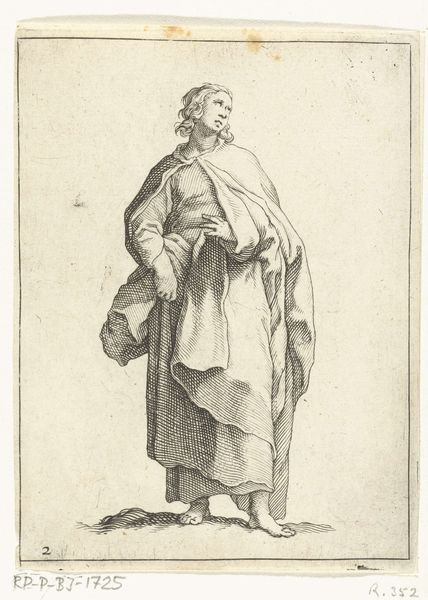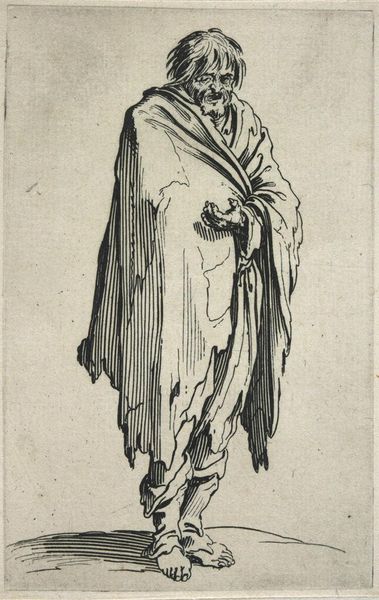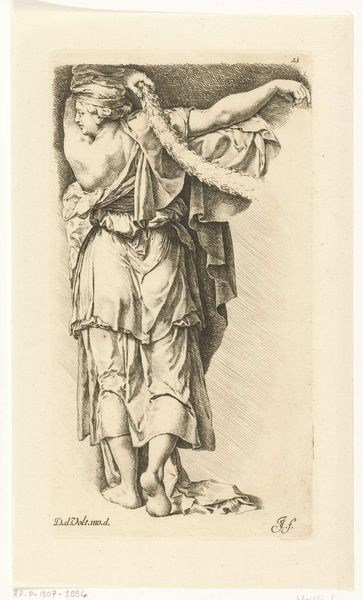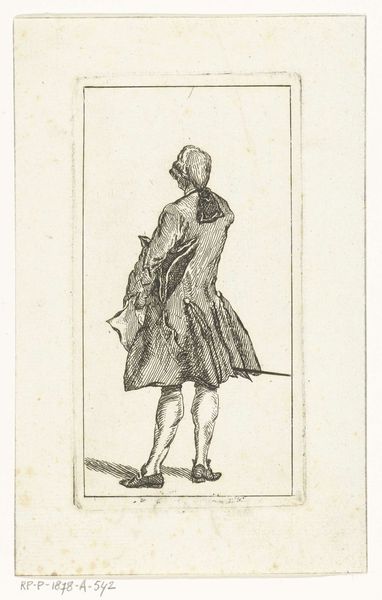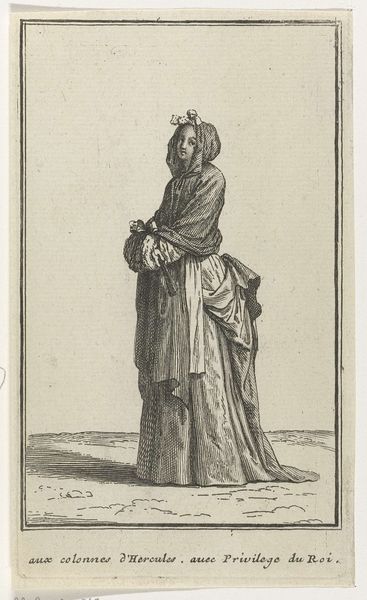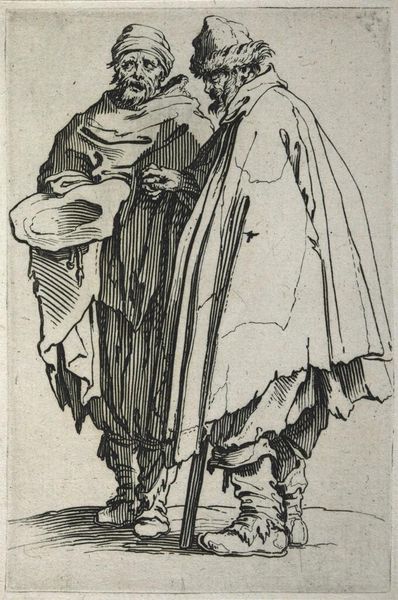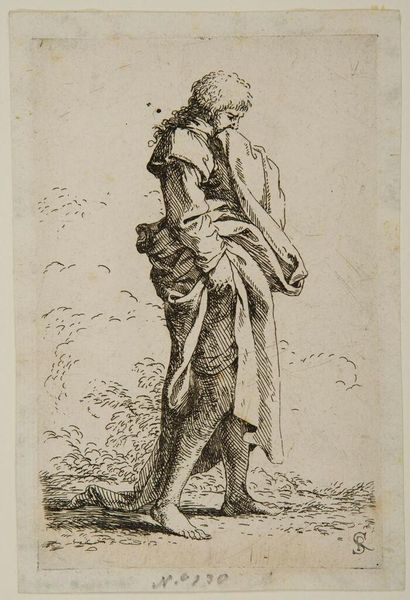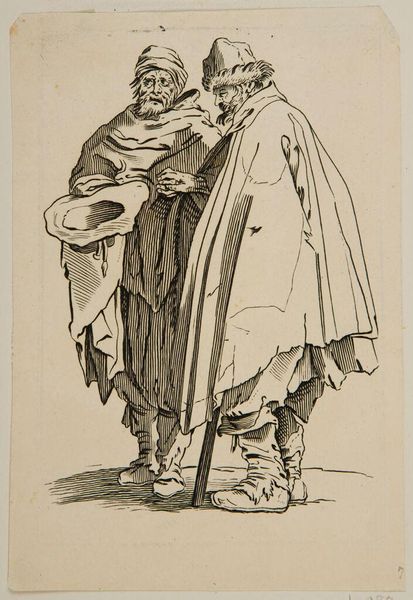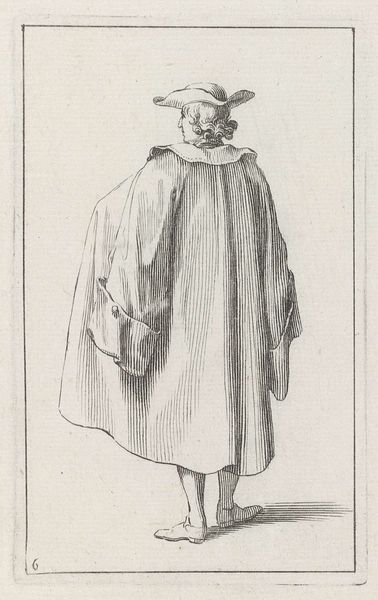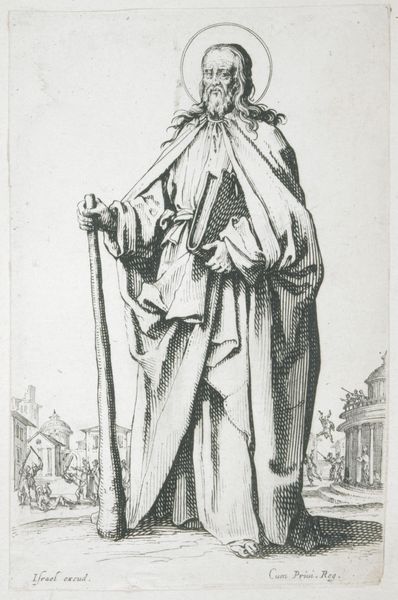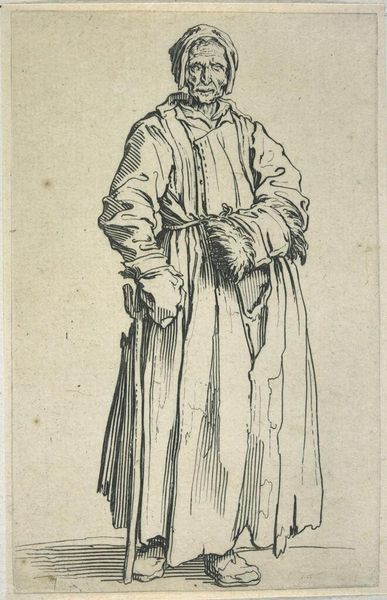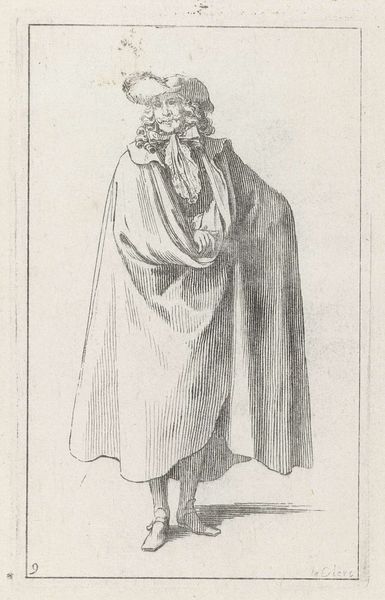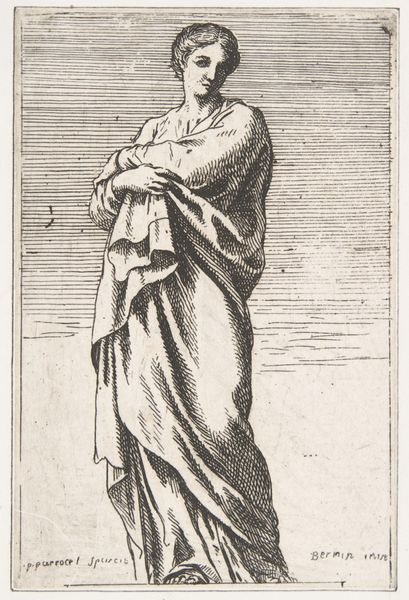
Man in losse schoudercape, hoed op de lange haren, naar rechts 1685
0:00
0:00
sebastienleclerci
Rijksmuseum
drawing, pen
#
portrait
#
drawing
#
quirky sketch
#
baroque
#
pencil sketch
#
figuration
#
personal sketchbook
#
idea generation sketch
#
sketchwork
#
pen-ink sketch
#
sketchbook drawing
#
pen
#
storyboard and sketchbook work
#
sketchbook art
#
initial sketch
Dimensions: height 149 mm, width 97 mm
Copyright: Rijks Museum: Open Domain
Editor: This drawing, "Man in losse schoudercape, hoed op de lange haren, naar rechts," created in 1685 by Sébastien Leclerc I, depicts a man in a rather dashing outfit. I'm struck by how detailed the folds of his cape are, despite the simplicity of the line work. What’s your read on this portrait? Curator: It’s intriguing to consider how Leclerc, working within the visual conventions and social hierarchies of 17th-century France, constructs an image of masculinity here. Think about the power dynamics implicit in portraiture during this era. Editor: So you’re saying it's not just a portrait, it's making some sort of statement? Curator: Exactly. How might the subject's attire – the "loose shoulder cape" and the hat concealing his long hair – project a specific social role or aspiration to the public? Was he trying to fit a stereotype or challenge one? Editor: I hadn't thought about it that way, focusing instead on the more artistic, design elements of the drawing itself. Considering the cultural context makes a big difference. It does prompt the questions "Who was this man, and how was Leclerc positioning him?" Curator: Indeed. The Rijksmuseum as an institution contributes to shaping the modern viewer’s interpretation. It presents this work within a narrative of artistic and cultural heritage. Think about whose stories are highlighted and whose are omitted. Editor: That's fascinating. I appreciate the nudge to consider not just what is depicted, but *why* and *how* it’s being presented to us now. Curator: Precisely! It allows for a much more critical and informed engagement with art history.
Comments
No comments
Be the first to comment and join the conversation on the ultimate creative platform.
